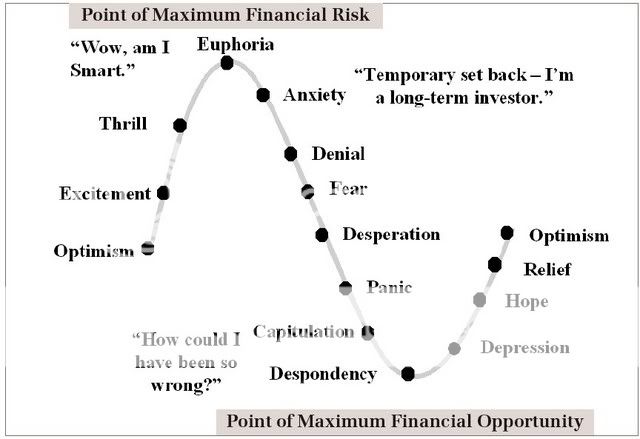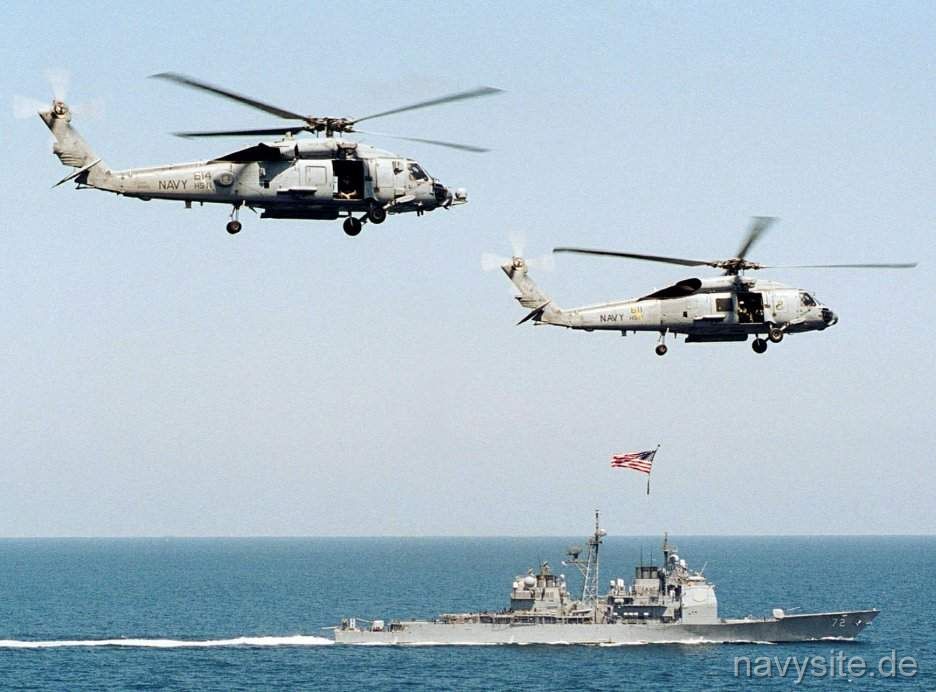Wealth
“If a man is proud of his wealth, he should not be praised until it is known how he employs it.”
~ Socrates
Ted Williams

Ted Williams was the most robust batter in baseball history. Williams discarded the strike zone and ignored umpire calls, instead creating his own personal batting zone. This was an area divided into 77 sub-sectors each the size of a baseball.
Through many trials, Williams determined that the probability distribution of him getting a hit was best in only nine of those zones. Using tremendous discipline in his set-up, he would only swing the bat if a pitch was in one of those nine zones. The results are recorded in baseball’s Hall of Fame.
If there was ever a time in market history when we all need to be Ted Williams, it’s now.
Sentiment Cycles

Shantideva: Far-reaching Mental Stability
(10) One moment, they’re friends;
In an instant, they’re enemies.
At a time for being delighted, they fall into a rage:
Ordinary beings are so difficult to please.
(11) Told what’s of benefit, they get enraged
And cause me to turn from what’s of benefit too.
But, if their words aren’t listened to,
They fall into a rage and go, then, to a worse rebirth state.
(12) They’re envious of superiors, competitive with equals,
Arrogant toward inferiors, conceited when praised,
And hateful when told what they don’t want to hear:
When is there benefit from infantile beings?
(13) If I associate with infantile people,
Then destructive behavior inevitably arises among infantile folk,
Such as praising myself and belittling others,
And prattling on about the pleasures of samsara.
(14) From entrusting myself to others in this way,
Nothing but loss comes about in the end,
For they’ll be, in fact, no-good for me
And I’ll be, in fact, no-good for them.
(15) So let me flee far away from infantile folk;
But if encountered, I’ll please them with pleasantries,
And without becoming overly familiar,
I’ll conduct myself nicely, merely as an ordinary person would.
Black Swan Revisited
The Black Swan theory (in Nassim Nicholas Taleb’s version) refers to a large-impact, hard-to-predict, and rare event beyond the realm of normal expectations. The term black swan comes from the commonplace Western cultural assumption that all swans are white. In that context, a black swan was a metaphor for something that could not exist. The 17th Century discovery of black swans in Australia metamorphosed the term to connote that the perceived impossibility actually came to pass.
In risk management, we need to deal with black swans that have consequences. Further, a search in the literature in the philosophy and history of probability shows the depressing fact that large impact events are absent from discussions. Probabilities by themselves do not matter. They can be very small, but their results are not. What matters in life is the equation probability x consequence. This point may appear to be simple, but its consequences are not.
If small probability events carry large impacts, and these small probability events are more difficult to compute from past data itself, then our empirical knowledge about the potential contribution – or role – of rare events (probability x consequence) is inversely proportional to their impact.
Machiavelli
“For the great majority of mankind are satisfied with appearances, as though they were realities, and are often more influenced by the things that seem than by those that are.”
– Niccolo Machiavelli (1469-1527)
The Thrillseekers – The Last Time
No one on earth
Could ever make me, make me feel
So loved, so complete
You and you only
The only answer to every reason that I can dream of
The one solution to every problem
That makes me crazy. That turns me inside out.
The last time we touched, the last time you held me
I was a soul in your hand
The last time we touched, the last time you held me
My life had only begun
The last time we met, and I could see you clearly
My eyes were not opened up
The last time we met, the last time I held you
I could see you clearly
Your sky is mine
I walk beneath it, not alone
When I call your name
You always answer
And every time I
Begin to doubt you
You give me more love
No hesitation
You come to me when
My heart is beating
So hard I can not breathe
You give me all I need
You give me all I need
And this is all I need
MV Faina
The MV Faina is a roll-on/roll-off cargo ship operated by a Ukrainian company that sails under a Belize flag of convenience. The Faina is owned by Waterlux AG, based in Panama City, and managed by Tomex Team in Odessa, Ukraine.

On 25 September 2008, the Faina was hijacked by approximately 50 Somali pirates calling themselves the Central Regional Coast Guard in the twenty-sixth such attack in 2008. The Faina’s crew (at the time of capture) consisted of 17 Ukrainians, three Russians and one Latvian. The ship was allegedly heading to Mombasa, Kenya, from Ukraine with 33 Soviet-made T-72 tanks, weapons (including rocket-propelled grenades and anti-aircraft guns) and ammunition on board, when it was seized. The pirates said they were unaware of the ship’s cargo before they captured it. However, the pirates claim that documents found onboard indicate that the arms cargo was destined for Juba, Southern Sudan, instead of Kenya, as originally understood. The claim was confirmed by U.S. Navy and Western intelligence officials, though the Kenyan government denies the allegation.

The pirates demanded a ransom and had threatened to blow up the ship, along with the pirates themselves and the ship’s crew, if the ransom is not paid. The ransom amount has been reported as US$35 million, US$20 million, and US$8 million in the days that the ship and its crew have been held hostage. The pirates are thought to be attempting to move toward the pirate haven of Eyl in Somalia in an attempt to unload some of the cargo there.

The U.S. Navy’s Arleigh Burke-class destroyer Howard and the Ticonderoga-class missile cruiser Vella Gulf engaged the Faina in pursuit within several hundred yards to stop the unloading of the cargo by the pirates. As of 21 October 2008, six U.S. warships have surrounded the Faina with the Russian missile frigate Neustrashimy en route.

On 28 September, Viktor Nikolsky, first mate on the Faina, said that Vladimir Kolobkov, the ship’s Russian captain, had died from a hypertension-related stroke. On 5 February 2009 the MV Faina was released after being held captive for 5 months. The remaining crew of 20 were freed along with the ship and are reported by the Ukrainian presidency as being healthy and safe. A ransom of US$3,200,000 was paid on 4 February 2009 by the ship’s mysterious owners. The pirates left the vessel early next day stating that the release had been delayed for one hour, but the ship was eventually released. The ship arrived to its destination, the Port of Mombasa, on 12 February 2009, where the cargo was unloaded. The body of the captain was taken to a local morgue awaiting a shipment to Russia.
Only an A-Team will do: MM Lee
IS THERE a need for a new type of leadership to steer Singapore into the future? Or will what has worked in the past continue to work in the future?
These questions flitted through 41-year-old Jonas Ang’s mind as he sat through a dialogue at the Human Capital Summit with Minister Mentor Lee Kuan Yew yesterday.
The human resource director decided to pose them to the man most responsible for building modern Singapore.
Mr Lee’s immediate response: ‘That’s a very pertinent and deep question which I’ve asked myself.’
He said the Singaporeans of today have higher aspirations and are better educated than in the past, but that has also led some to believe that they know better than the Cabinet ministers.
‘You can see it in the letters to the press, which isn’t a bad thing provided they understand that they may not be right, because the ministers aren’t stupid,’ he said.
Changing times notwithstanding, Singapore must continue to have an A-Team of leaders in place, he added.
He said: ‘If we field a B-Team, we are in trouble. We’ve got to have an A-Team. I don’t care whether it’s the PAP (People’s Action Party) or any other party.
‘You need first-class people with good minds, a sense of obligation to do a good job for the people and the ability to execute. That’s an A-Team.’
How is an A-Team picked? MM Lee gave a peek into the process.
First, potential leaders undergo rigorous selection tests. They are then put through at least two five-year terms before they get to higher office, he said. ‘So we know that they got what it takes.’
A type of leader that Singaporeans must guard against is the glib speaker who cannot perform.
Said MM Lee: ‘That you can talk plausibly doesn’t mean you can perform effectively. They’re two different qualities. A good politician must be able to do both.’
One reason for the stringent criteria for future Singaporean leaders is the competition the country faces from up-and-coming economies like China and India, he said.
Still, there is something very much on the side of future Singapore leaders.
This is the Singapore system, characterised by traits like the rule of law, transparency, fair play and meritocracy, he said.
India and China will take at least 20 to 50 years to catch up with Singapore in this aspect, he believes.
Canadian and Singapore PR Edouard Merette, who has lived here for 12 years, agreed with MM Lee.
The peaceful, safe and efficient environment here is one reason why his company, Aon Consulting, decided to set up its regional headquarters and a research centre here.
Said Mr Merette, Aon Consulting’s CEO for Asia-Pacific: ‘Singapore is a modern society in a Third World area. You can give compliments only to Mr Lee’s leadership.’